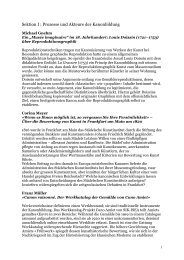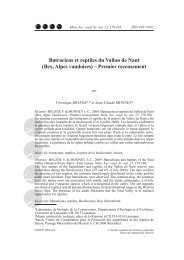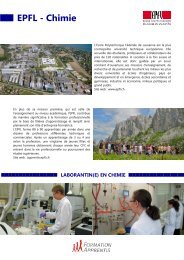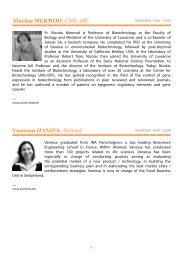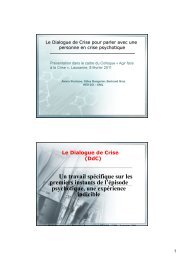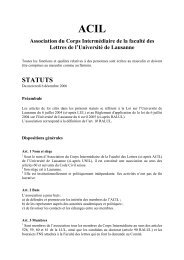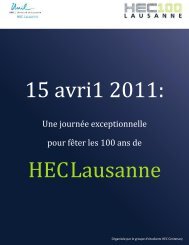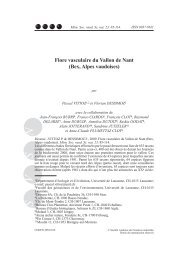a summary of the topics - Université de Lausanne
a summary of the topics - Université de Lausanne
a summary of the topics - Université de Lausanne
Create successful ePaper yourself
Turn your PDF publications into a flip-book with our unique Google optimized e-Paper software.
I.3 The point <strong>of</strong> view <strong>of</strong> society<br />
Medicine and increased standards <strong>of</strong> living have dramatically modified <strong>the</strong> age pyramid<br />
and <strong>the</strong> proportion <strong>of</strong> el<strong>de</strong>rly people in Western countries (Figure 1). In Switzerland,<br />
<strong>the</strong> proportion <strong>of</strong> individuals over 60 has been multiplied by 8 over <strong>the</strong> last century. While<br />
living ol<strong>de</strong>r is not bad news in itself, it is accompanied by a <strong>de</strong>crease in birth rates and thus a<br />
lower renewal <strong>of</strong> <strong>the</strong> population, which is biologically vital. The aging <strong>of</strong> <strong>the</strong> population has<br />
emphasized new diseases related to old age, such as cancers, cardio-vascular diseases and<br />
neuro<strong>de</strong>generative illnesses. The accumulation <strong>of</strong> such diseases has resulted in <strong>the</strong> physical<br />
frailty <strong>of</strong> <strong>the</strong> individuals and <strong>the</strong>ir social <strong>de</strong>pen<strong>de</strong>ncy. The shift in <strong>the</strong> age distribution <strong>of</strong><br />
<strong>the</strong> population has been accompanied by new social needs, changes in <strong>the</strong> allocation <strong>of</strong><br />
resources, and cultural changes. In strictly economic terms, this aging population contributes<br />
little to <strong>the</strong> rest <strong>of</strong> society while placing high <strong>de</strong>mands on it.<br />
© cmglee -wikimediacommons<br />
Figure 1<br />
Life expectancy <strong>of</strong> females (vertical<br />
axis) and males (horizontal<br />
axis) from <strong>the</strong> time <strong>of</strong> birth. Females<br />
tend to live longer. There<br />
is a statistically significant relation<br />
between age expectancy<br />
and social wealth<br />
One logical answer to <strong>the</strong> downward dynamics <strong>of</strong> <strong>the</strong> population would be to try to improve<br />
physical and mental fitness – which are consi<strong>de</strong>red to reflect <strong>the</strong> quality <strong>of</strong> life – up<br />
to <strong>the</strong> ol<strong>de</strong>st possible age. This is an undisputed goal <strong>of</strong> medicine because everybody wants<br />
to live ol<strong>de</strong>r in good shape. The drawback, however, is that el<strong>de</strong>rly in good physical and<br />
mental shape have become an i<strong>de</strong>al representation in Western societies, while physical and<br />
7



